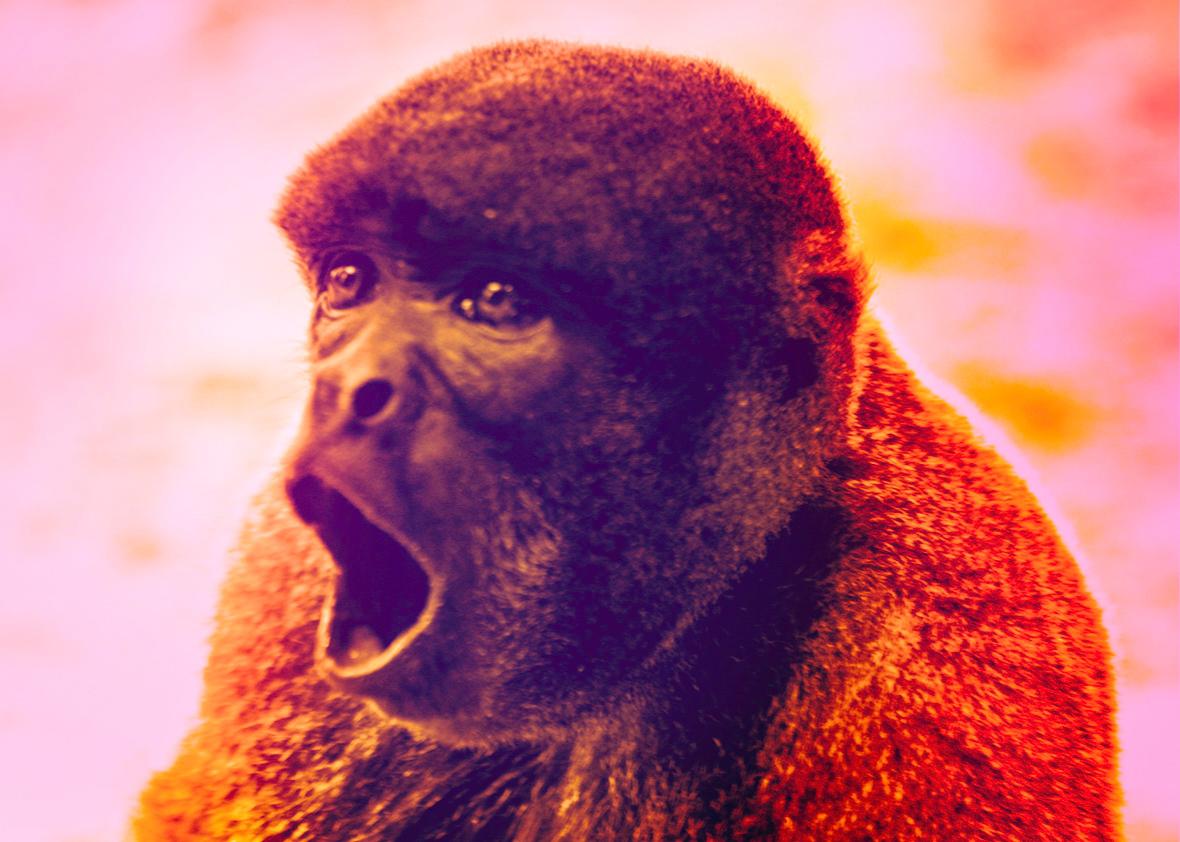Once upon a time, I was a copywriter at a small advertising agency. Each day, I’d clench my teeth through two-and-a-half hours of traffic so that I could write brochures, websites, and billboards for a bunch of companies you’ve never heard of. It wasn’t the worst job in the world—the incidence of black lung disease among copywriters is very low—but I knew from the first time my fingers typed the words brand evangelist that I wasn’t long for the industry.
So one night I went home and started a blog—for that is how the modern bildungsroman begins. My first post explained why human males have what looks like a seam running down the middle of their scrotums. It did not go viral.
But it did give me an outlet to investigate the weirdness of the natural world. Why is bird poop white? Why do hippos appear to sweat blood? Why do opossums have penises that look like lobster forks?
After typing through the dawn, I’d go into work the next day and show my co-workers what madness I’d gotten into the night before. (I’d link to it here, but my website is in the shop.) My colleagues were nice enough to laugh politely, but my boss—perhaps thinking he was doing me a favor—would wonder aloud why I would waste my time and sleep on things as insignificant as house centipedes. And by the way, where were those Facebook ads for our nutraceutical client?
But I kept going, mostly because I thought it was fun. I got tendonitis in both wrists from typing day and night. I bought an economy-sized bottle of ibuprofen and started sending out pitches.
Then, as I headed out to play flag football with some friends the day after Thanksgiving in 2012, Slate published a story I’d written about porcupine sex—a bizarre dance that occurs every fall between males and females that involves “stark, night-piercing shrieks that could be likened to the noises produced by a banshee banging a Velociraptor.”
It was the proudest moment of my professional life.
Three years later, I’ve written for National Geographic News, onEarth, Pacific Standard, Mental Floss, Earth Touch News, Fast Company, Hakai, and the Week. I’ve spoken at colleges and conferences. And I got to bow out of the ad game.
Along the way I have always kept a special place in my heart for Slate and my editor here, Laura Helmuth, who took a chance on that fledgling first pitch. Whether she’s helping hone my voice, calling me on jokes that don’t land, or fighting for a well-placed cuss, Laura has been one of the most influential people on my path as a science writer. Best of all, she’s just as fascinated by bear baculi as I am.
Which is why I’m honored to be writing for Slate again on a more regular basis. In the past six months I’ve gotten to riff on murderous hummingbirds, stinky whale milk, crab-castrating barnacles, vampire finches, and T. rex coitus. It’s like I’ve died and gone to weird-science heaven. Earlier this week, I got to interview scientists about howler monkey testicles.
Every day, I get to learn a dozen new things about the natural world. Whether it’s headline news like the howlers or something I found tucked away in an old biology book like the porcupines, writing about animals is never boring.
Dogs become physically locked together when they have intercourse. Armadillos give birth to genetically identical quadruplets of the same sex. Seagulls in Namibia have been actively targeting the eyeballs of Cape fur seal pups. Snowflake eels have a second set of jaws, like the aliens Sigourney Weaver battled. Dopey-looking seahorses are actually brutally effective copepod assassins. When you remove vultures from an ecosystem, it implodes.
I can’t get enough of this stuff. Whether it’s missionary squirrels or cannibalistic hamsters or go-go-gadget bat tongues, I hope you’ll join us each week over at Wild Things. In my latest post you can see vampire bats doing their best impression of Sweatin’ to the Oldies. For science!
